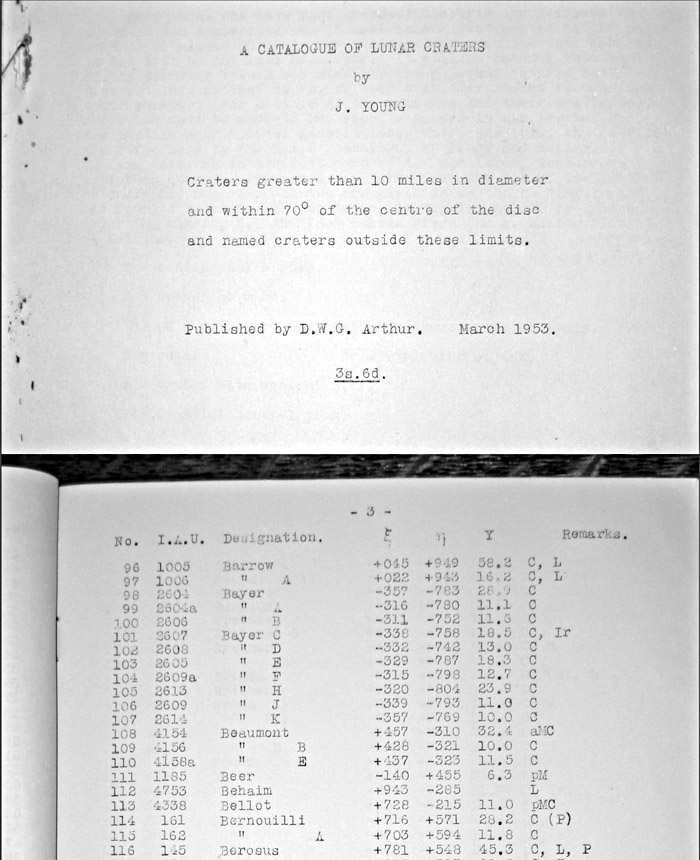
image by Chuck Wood, West Virginia, USA
In the late 1890s Phillip Fauth initiated a new interest in quantitative studies of the Moon - he called it the Modern Selenology. Fauth’s new direction came about because he was German, in the tradition of Julius Schmidt who had made thousands of measurements of crater dimensions, and partly in reaction to other observer’s outlandish claims of purported changes on the Moon. Few people in England - the epicenter of lunar studies for much of the early 20th century - followed Fauth’s lead, but one who recognized the need for accurate measurements was J. Young. This is the title page and sample page from Young’s A Catalogue of Lunar Craters published by D.W.G. Arthur in 1953. Although most famous for its list of crater diameters, Young also included information for 1417 craters on their locations and physcial characteristics - including if they had central peaks or formed on mare or highlands. This catalog was the template for later ones, such as The System of Lunar Craters, but unfortunately, the classification information has not been included in the digital versions of these older catalogs. I haven’t been able to find any information about Young, but Ewen Whitaker tells me that the 1950 list of members of the British Astronomical Association includes a James Pollock Young, BSC, who joined the BAA in 1932 and lived in India. I am not sure if this is the same person, for in Arthur’s introduction to Young’s Catalogue he refers to Dr. Young. This historical mystery - and the Catalogue itself are of little interest today, except to lunatics like me. NOTE ADDED DEC 23: See the comment below for the correct identification of Dr. Young.
Technical Details:
The Catalogue is 32 pages long and mimeographed; unfortunately, the yellowed color of the 53 year old paper did not show up on the photo so I changed it to a BxW image. Whitaker’s copy has a green cover demonstrating that there are different versions.
Yesterday's LPOD: Saturation and Filling in
Tomorrow's LPOD: Measuring a Serpent
COMMENTS?
Register, Log in, and join in the comments.



